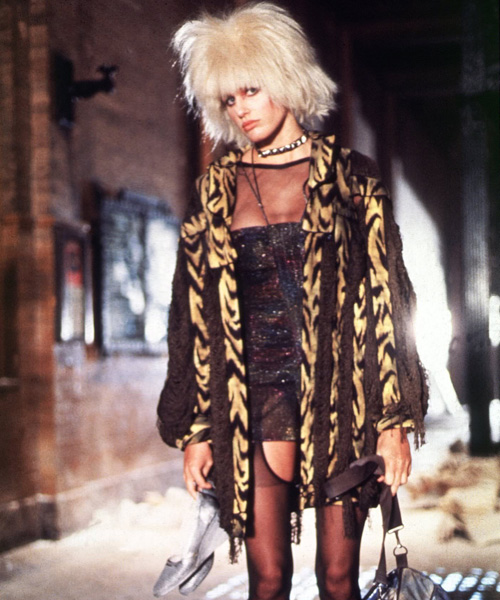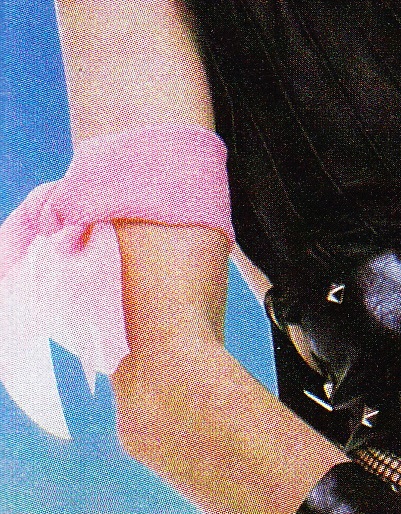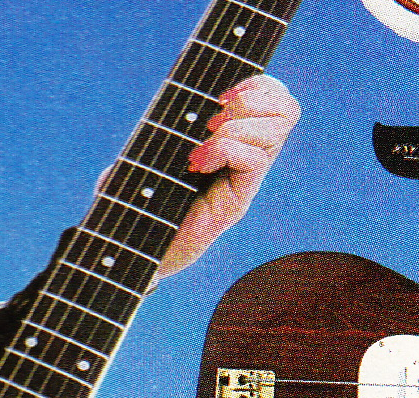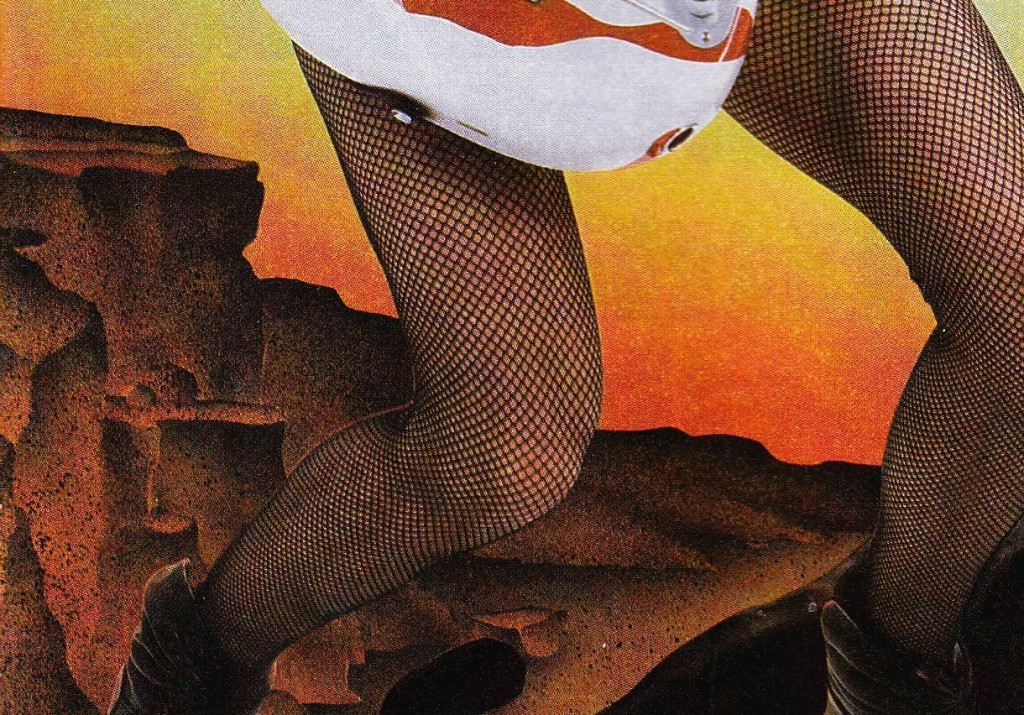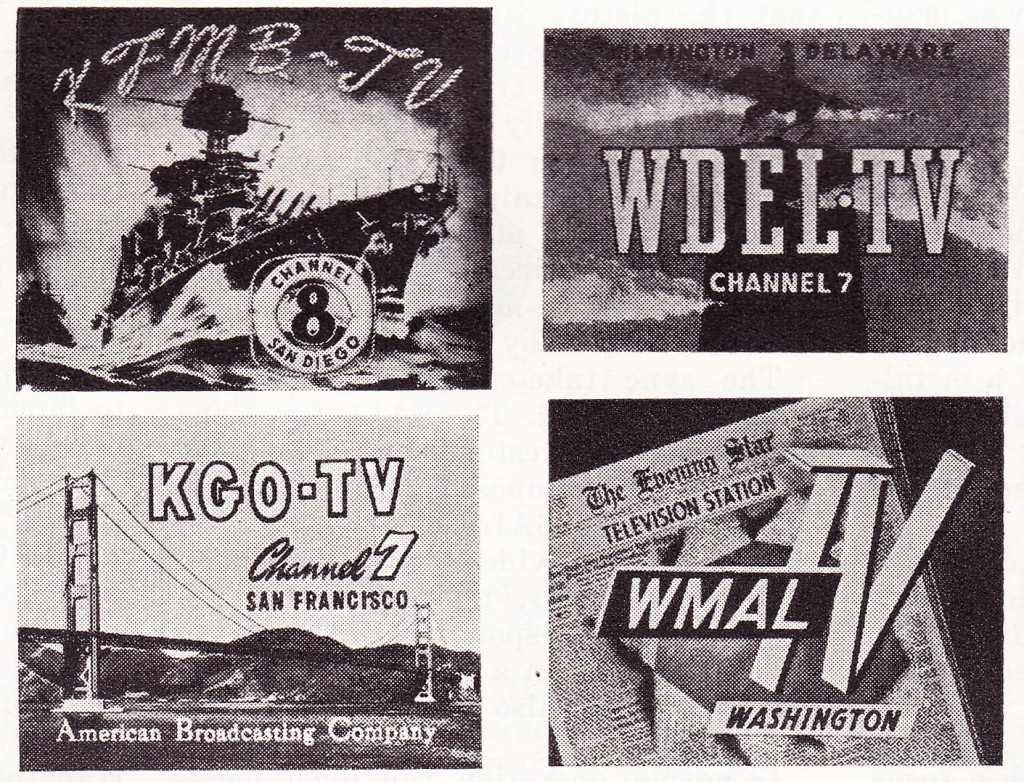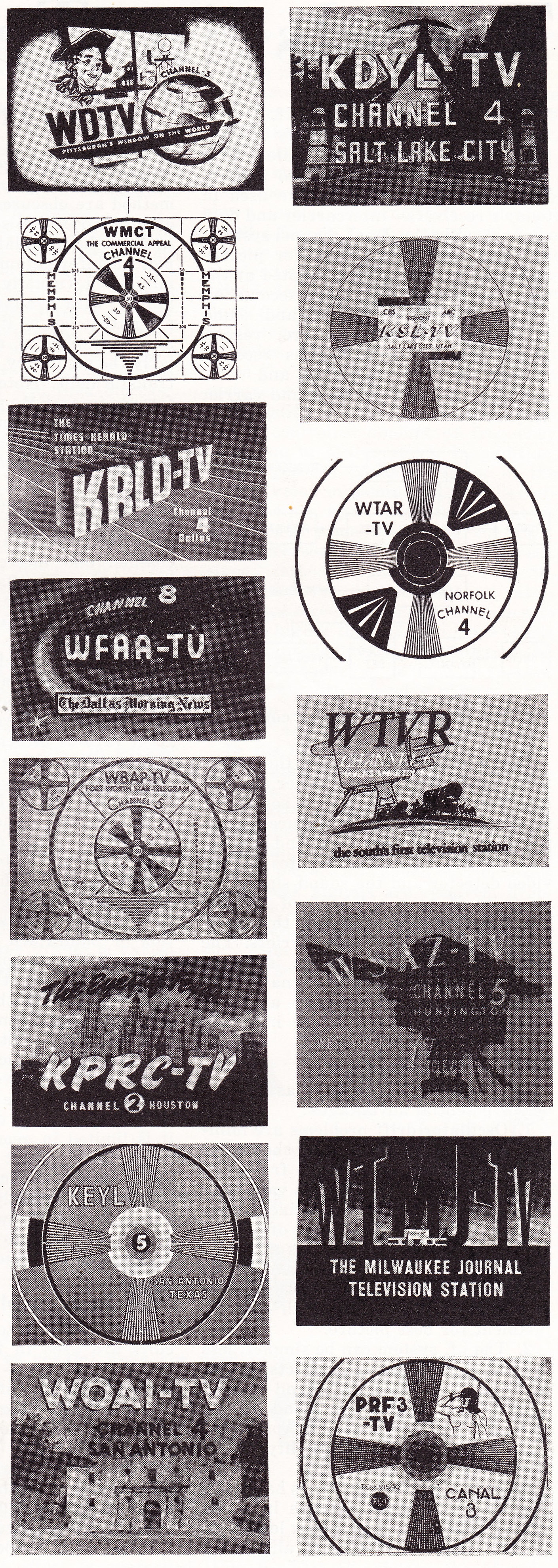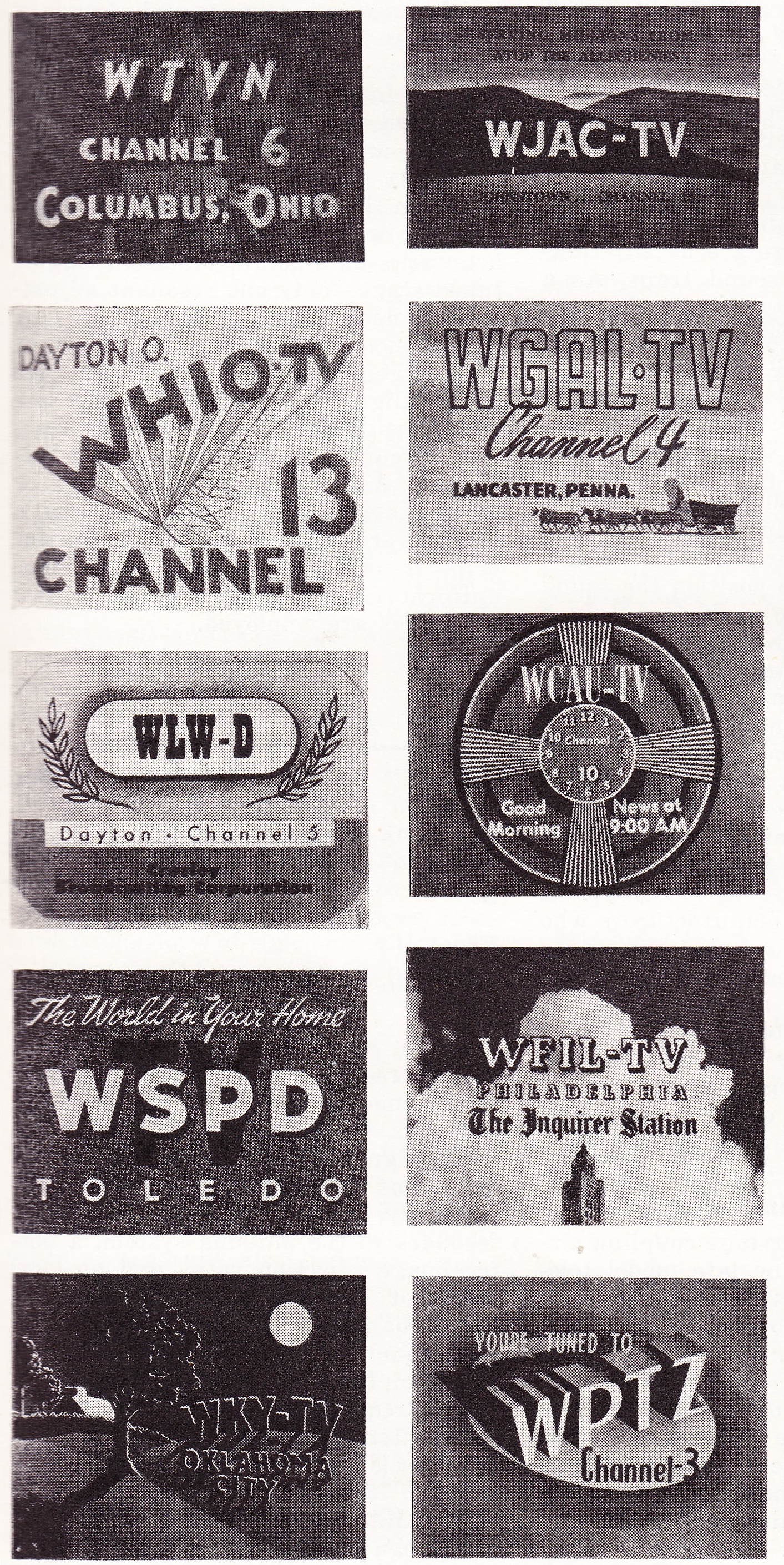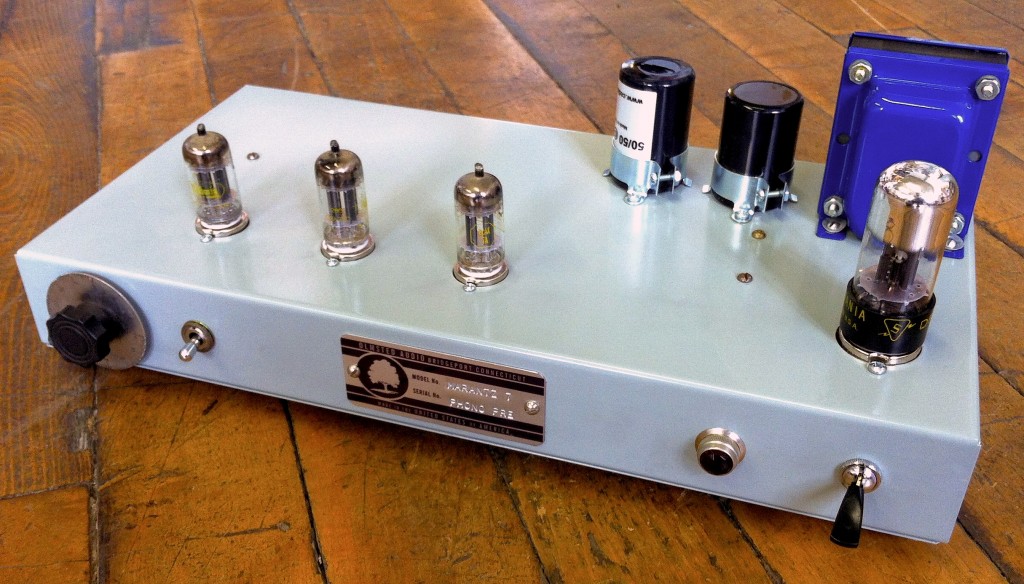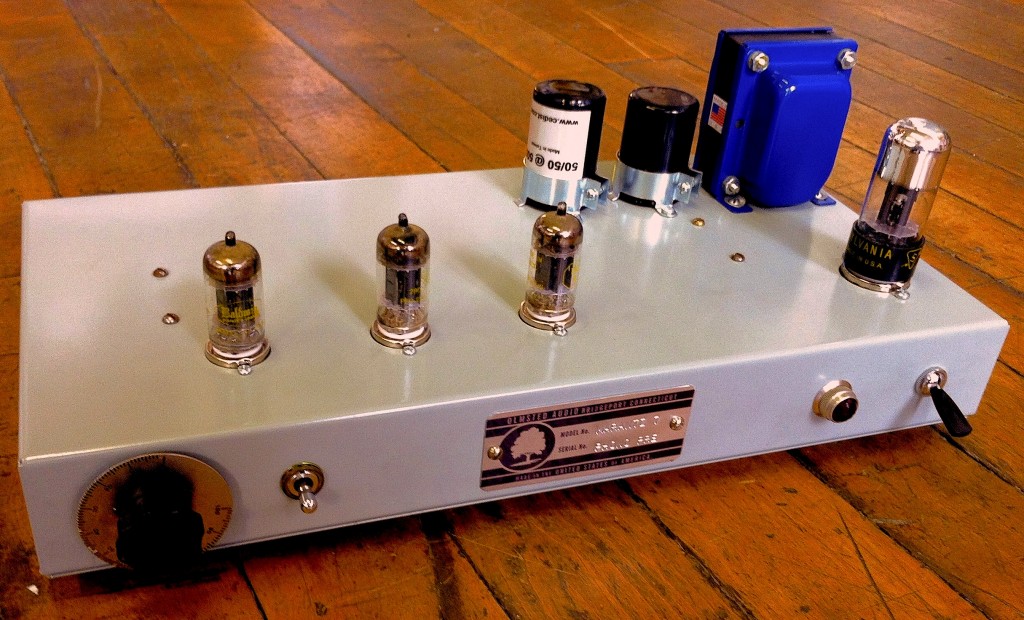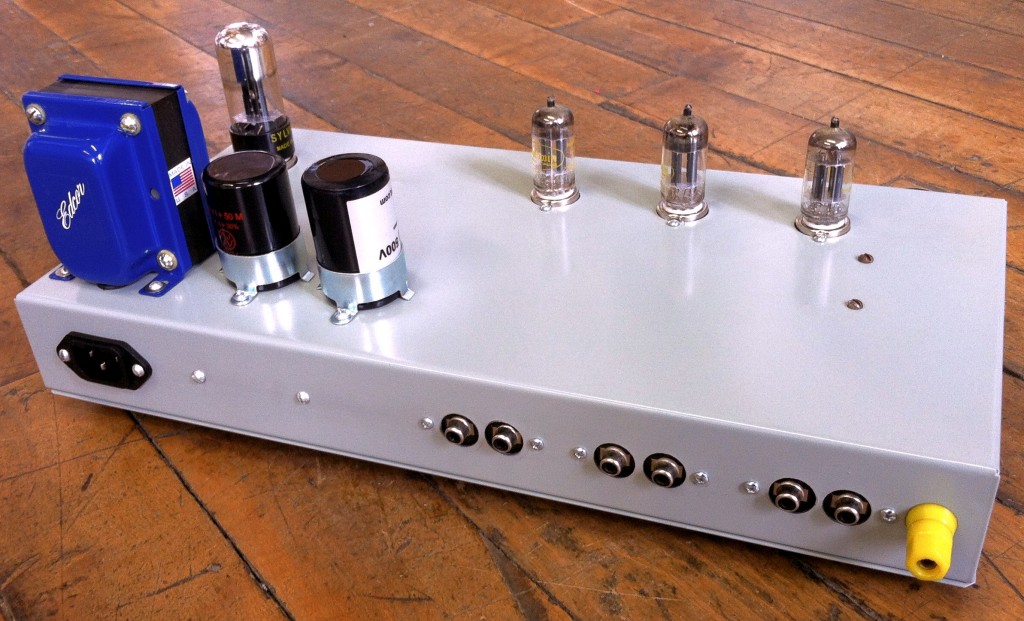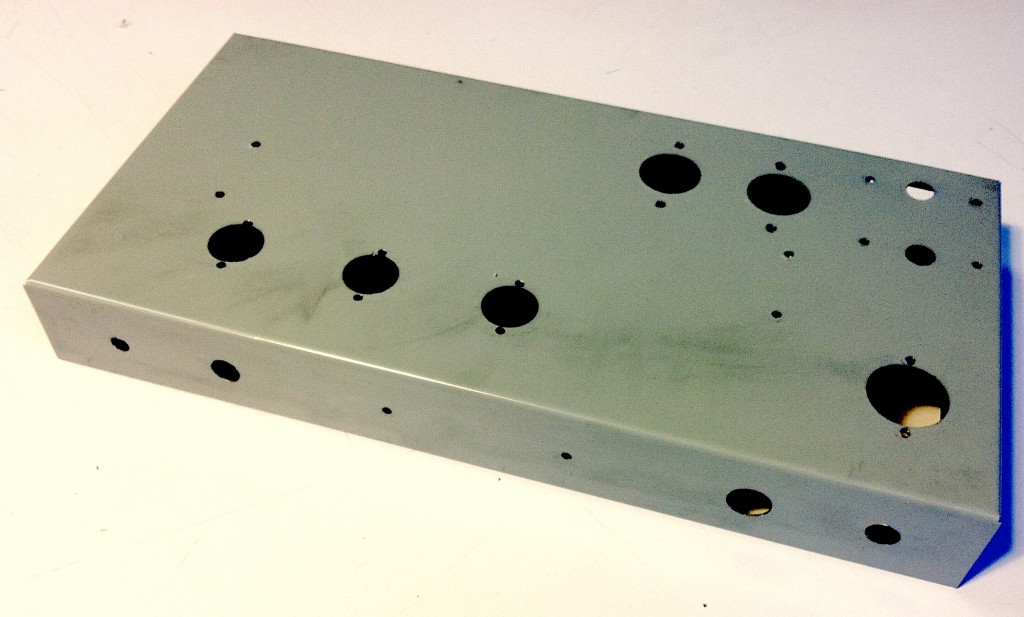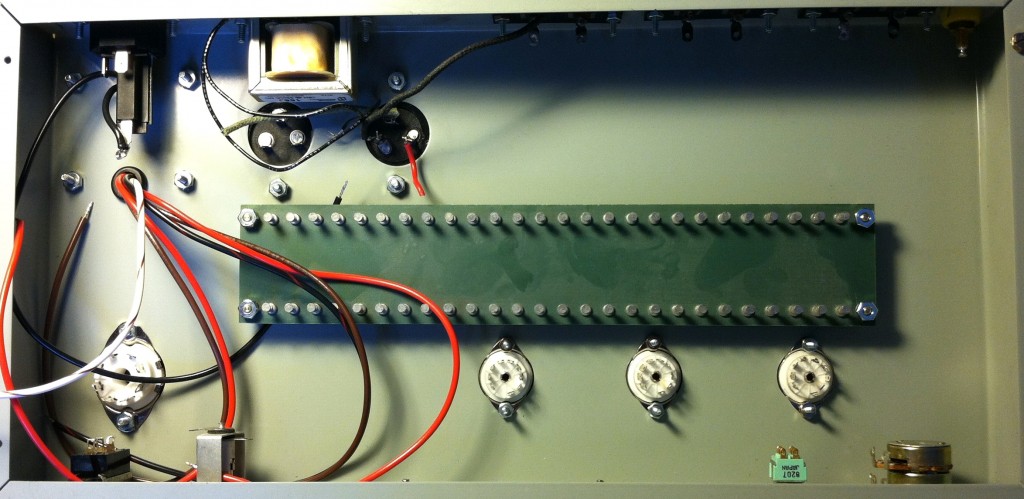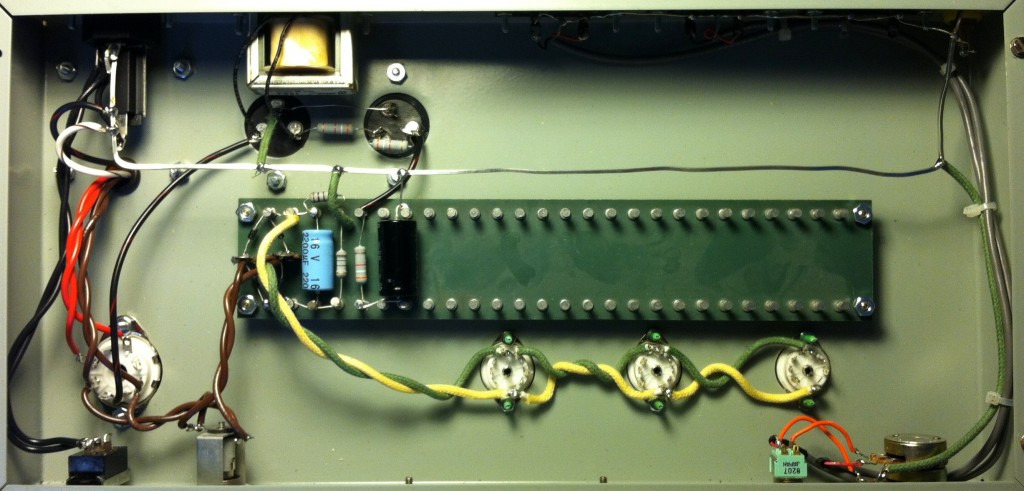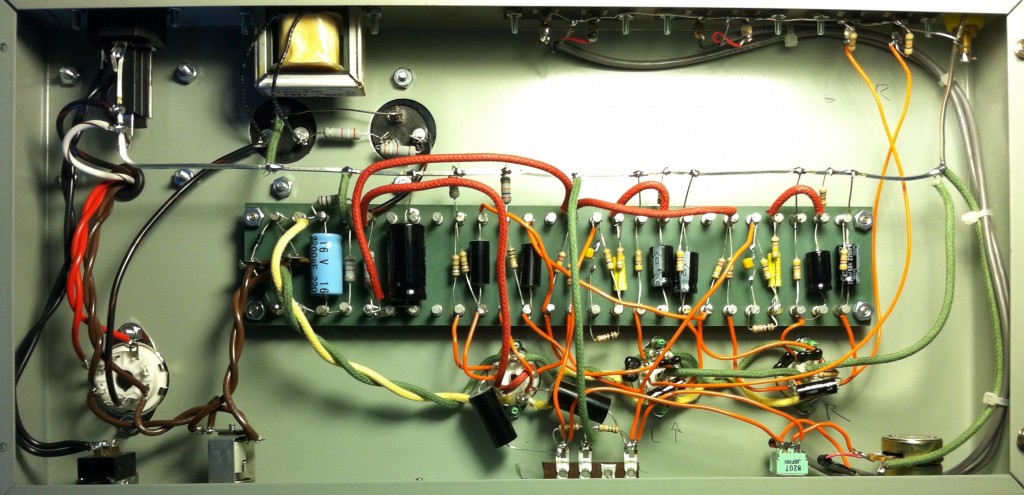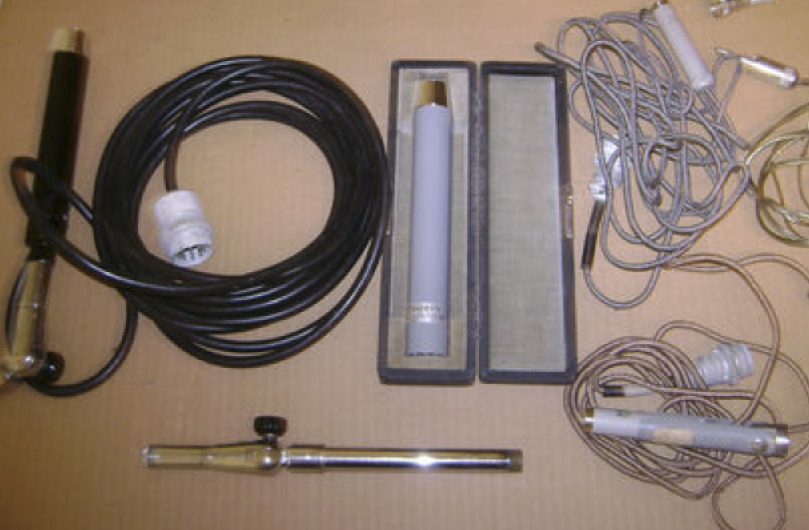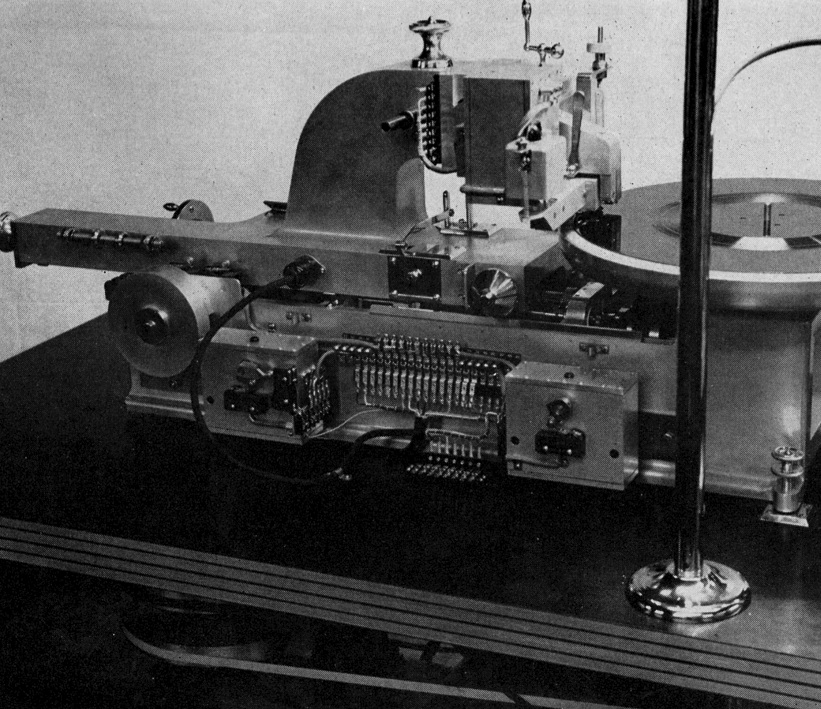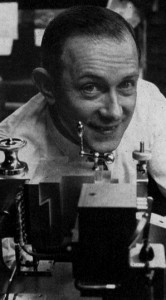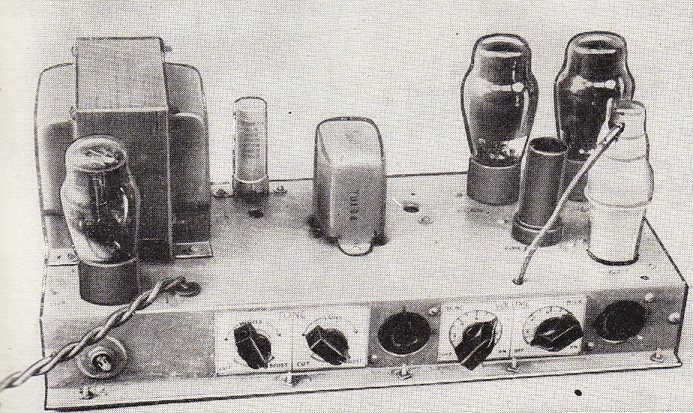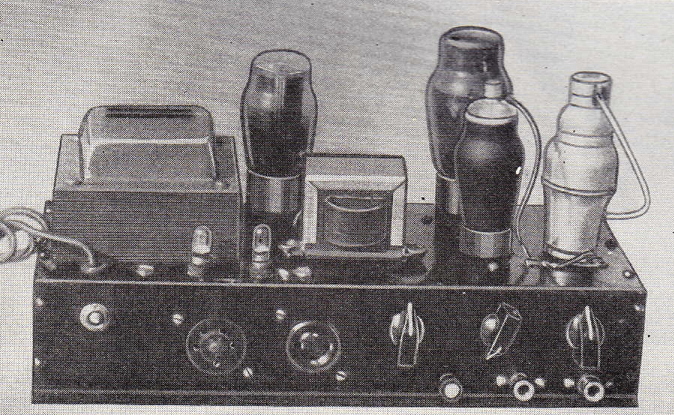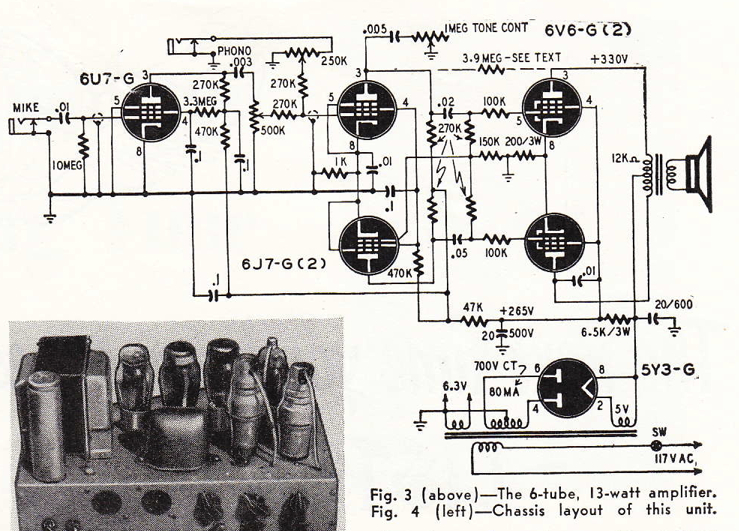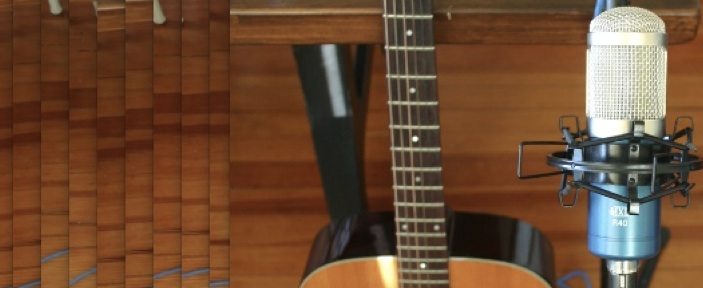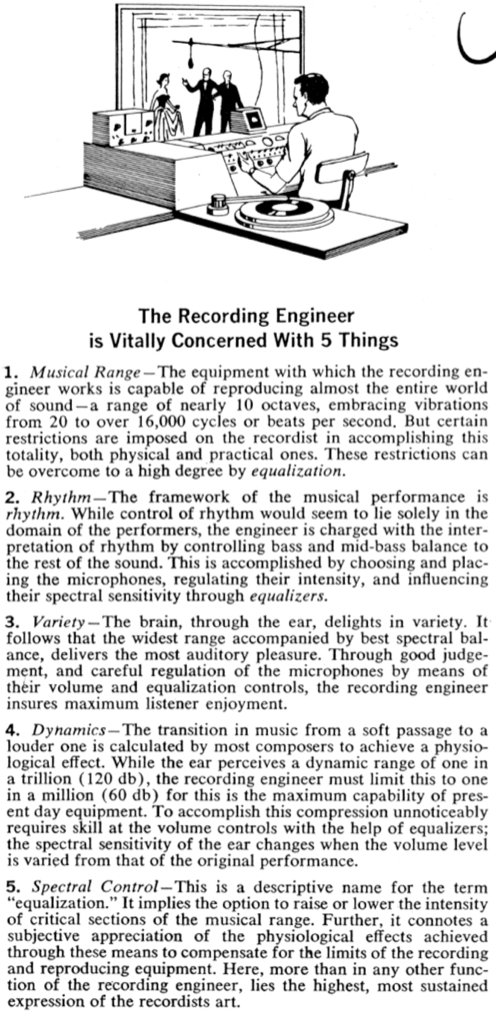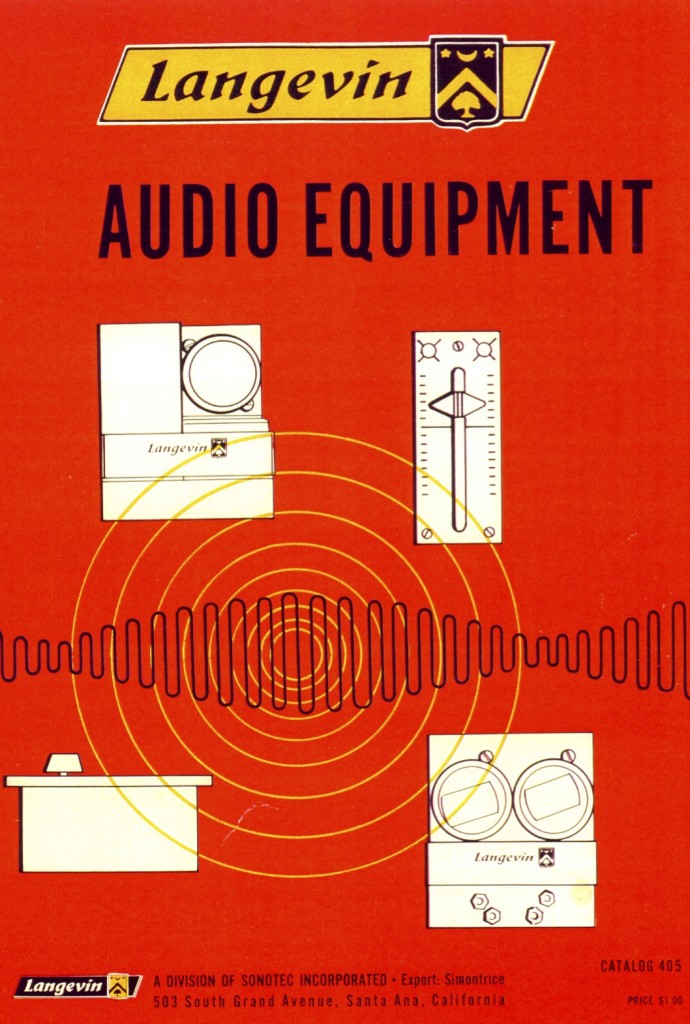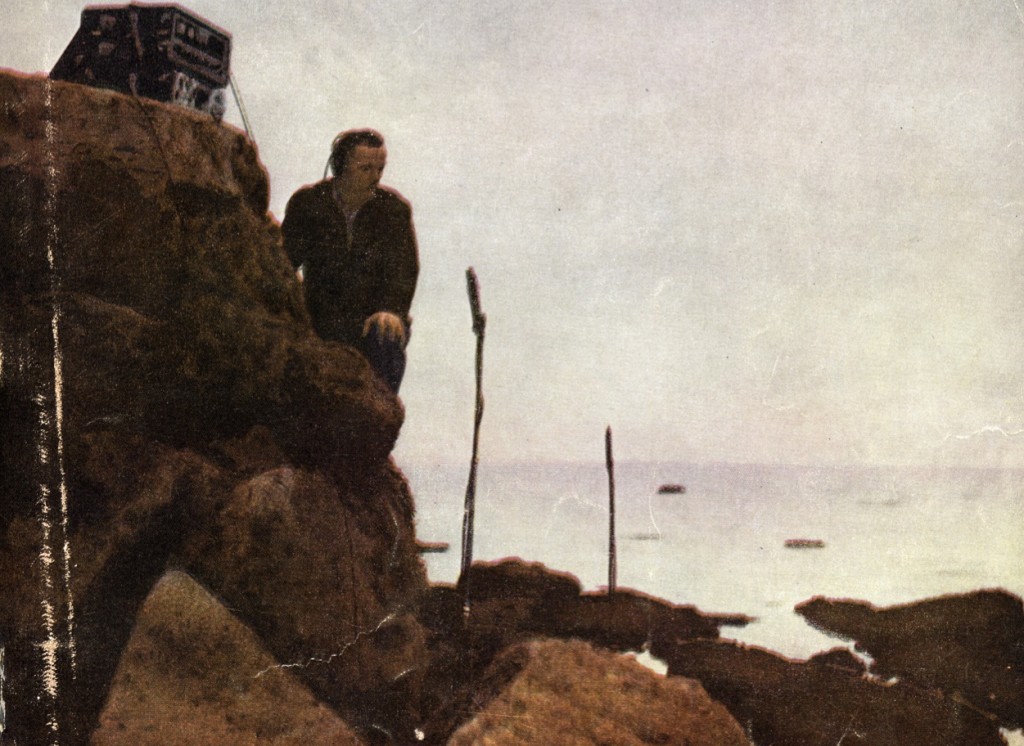 Emory Cook records Long Island Sound at Shippen Point, Stamford CT (with two mics, of course): 1954. He is using a Modified Magnecorder. This, and all other reproduced materials in this article are courtesy T.Fine.
Emory Cook records Long Island Sound at Shippen Point, Stamford CT (with two mics, of course): 1954. He is using a Modified Magnecorder. This, and all other reproduced materials in this article are courtesy T.Fine.
***UPDATE: I’ve added a variety of links to relevant Cook-resources at the end of the piece. ***
Thanks again to contributor T.F. for providing an extensive collection of documents relating to one Emory Cook, inventor, Connecticut businessman, and pioneer of binaural sound. There is much too much information contained within these primary source documents for me to adequately paraphrase, but here is a quick synopsis.
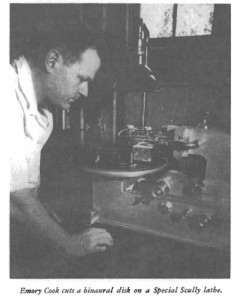 Cook (at left) attended MIT, briefly, in the 1930s, and received his electrical engineering degree (minor in communications) from Cornell immediately following. After an incomplete stint at Columbia Grad he went into industry as an engineer, primarily radar and some broadcast work. Excited by the postwar prospects of magnetic-tape recording and the general explosion of sound-recording technology of the late 1940s, Cook then began his own enterprise of designing and manufacturing sound-recording hardware which he claimed offered vastly better performance than competing products. This led, in short turn, to Cook Records, which issued over 140 LPs over the course of two decades.
Cook (at left) attended MIT, briefly, in the 1930s, and received his electrical engineering degree (minor in communications) from Cornell immediately following. After an incomplete stint at Columbia Grad he went into industry as an engineer, primarily radar and some broadcast work. Excited by the postwar prospects of magnetic-tape recording and the general explosion of sound-recording technology of the late 1940s, Cook then began his own enterprise of designing and manufacturing sound-recording hardware which he claimed offered vastly better performance than competing products. This led, in short turn, to Cook Records, which issued over 140 LPs over the course of two decades.
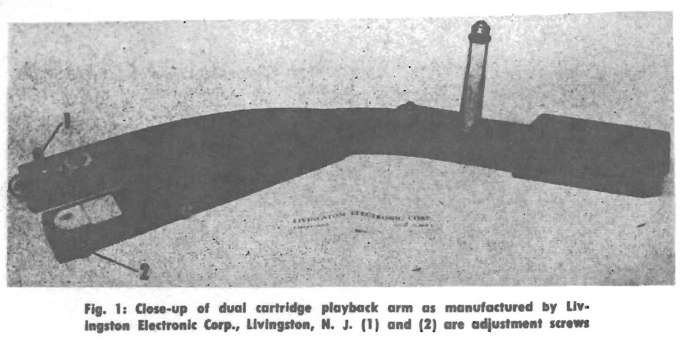
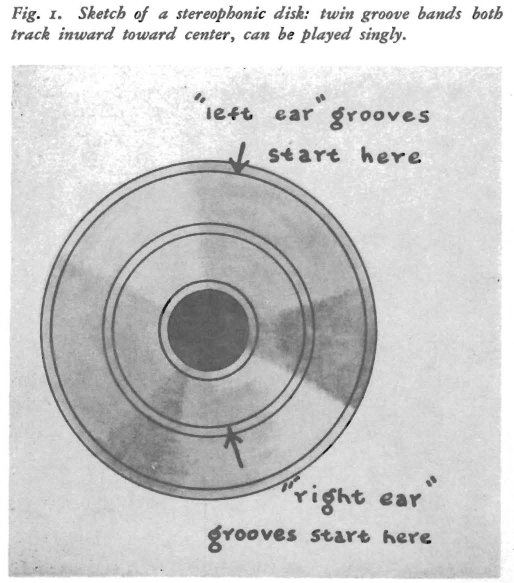 Above: Cook’s preferred solution to the problem of creating a fully mono-compatible stereo LP disc record. Two separate cartridges with ample spacing each track a separate groove. The disc could therefore be played on any mono machine without issue. Click here for further information on this forgotten technology.
Above: Cook’s preferred solution to the problem of creating a fully mono-compatible stereo LP disc record. Two separate cartridges with ample spacing each track a separate groove. The disc could therefore be played on any mono machine without issue. Click here for further information on this forgotten technology.
Cook achieved the widest recognition for his research and development of binaural sound apparatus. Binaural sound is a specific type of stereo (two channel synchronized) sound which specifically attempts to capture sound in a manner consistent with the hearing apparatus of an unimpaired (IE., having full use of both ears) human animal. Stereo sound is much broader field; truly, any system in which two discrete channels are programmed and synchronized for playback on two separately-located transducers could be described as ‘stereo.’ As the past sixty years of electronic media history has played out, true Binaural sound techniques have had limited application and/or consumer appeal, but it is critical to recognize how the field of stereo sound was largely birthed by individuals such as Mr. Cook who were so taken by the attempt to recreate, electronically, the biological process of two-eared hearing and the spatial-localization that it affords. Beginning in the early 1950s, Cook published a number of papers and articles on the subject. I would encourage you to read them and get the story from the horse’s-mouth, as-it-were:
DOWNLOAD: Tele-Tech-5211-Emory_Cook-Recording_Binaural_Sound_on_Discs 1952: Cook explains and defends his two-cartridge stereo LP system and offers a design for an economical stereo amplifier.
DOWNLOAD: Emory_Cook-Binaural_Disks. A more consumer-oriented essay which covers similar material as the prior.
DOWNLOAD: Emory_Cook-AIEE-530616-Binaurality. A technical paper on binaurality delivered in 1953. T.F comments: “(it is) interesting how (Cooks’s) summary of past technology ignores Blumlein’s 1934 patent.”
DOWNLOAD: High_Fidelity-5410-Emory_Cook. A largely biographical piece from HIGH FIDELITY, 1954.
IN ADDITION: The Journal of the Audio Engineering Society ran an excellent essay by Cook in their very first issue, January 1953. Since the AES depends on the sale of their previously published material for revenue, I do not think it suitable to offer that article here; you can, however, purchase it directly from them.
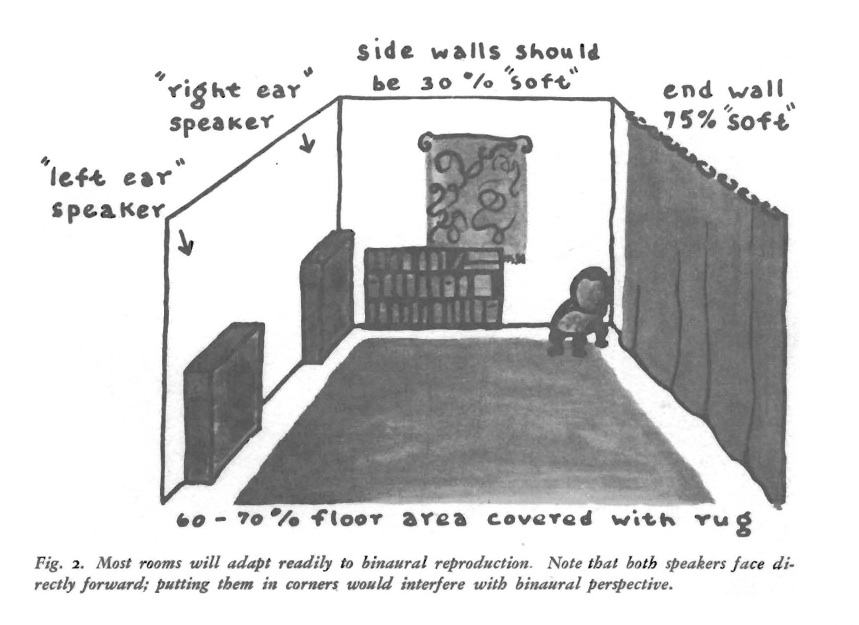 Above: Cook’s suggestion for creating a listening environment for Binarual audio playback. Contemporary thinking seems to regard headphone-listening as the only suitable mechanism for Binaural playback; Cook’s advocation of loudspeakers suggests that perhaps the difference between ‘binaural’ and ‘stereo’ need not be quite so rigid. T.F. comments: “Cook’s explaination of Binaural…is somewhat different from the 1930’s theories of Alan Blumlein. Cook always assumed speakers, and also the right triangle of two speakers and a listener in the center. “
Above: Cook’s suggestion for creating a listening environment for Binarual audio playback. Contemporary thinking seems to regard headphone-listening as the only suitable mechanism for Binaural playback; Cook’s advocation of loudspeakers suggests that perhaps the difference between ‘binaural’ and ‘stereo’ need not be quite so rigid. T.F. comments: “Cook’s explaination of Binaural…is somewhat different from the 1930’s theories of Alan Blumlein. Cook always assumed speakers, and also the right triangle of two speakers and a listener in the center. “
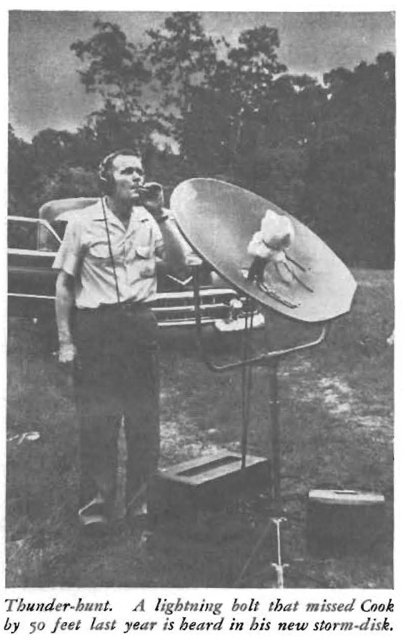 Cook spent considerable time and energy traveling the world to capture sound-events using the specialized equipment that he developed. Like many early audio pioneers, he was greatly interested in the power of sound and sound-recording itself; musical recording was an important part, but only a part, of what he saw as a world of exciting sounds to capture and make available to consumers through recorded media.
Cook spent considerable time and energy traveling the world to capture sound-events using the specialized equipment that he developed. Like many early audio pioneers, he was greatly interested in the power of sound and sound-recording itself; musical recording was an important part, but only a part, of what he saw as a world of exciting sounds to capture and make available to consumers through recorded media.
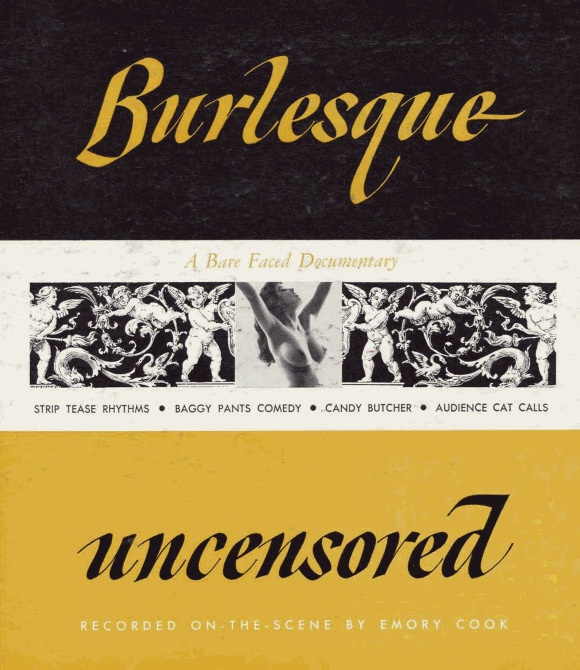 Above: one of his less high-brow offerings. Click here for liner notes: COOK01071_Burlesque.
Above: one of his less high-brow offerings. Click here for liner notes: COOK01071_Burlesque.
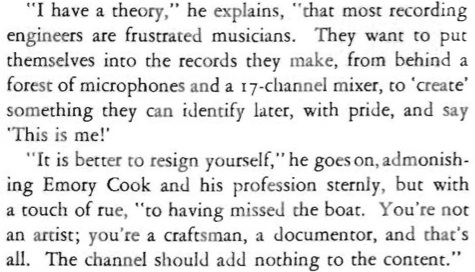 Above: a more concise summation of the technical recordist I have not seen. My $.02: I can’t wholly disagree with what Cook states here, but perhaps it is wiser to recognize that his conception of a recording engineer is one of many valid approaches to that field of endeavor. Perhaps in 1953 this was tougher to see. It’s certainly not irrelevant in our current moment, though; Cook’s viewpoint reminds me very much of contemporary recording great Steve Albini, who’s extreme preference for documentary-style production has led to some great (Nirvana, Palace) and not-so-great (Jarvis Cocker) albums. Sometimes it’s the right move, sometimes it ain’t.
Above: a more concise summation of the technical recordist I have not seen. My $.02: I can’t wholly disagree with what Cook states here, but perhaps it is wiser to recognize that his conception of a recording engineer is one of many valid approaches to that field of endeavor. Perhaps in 1953 this was tougher to see. It’s certainly not irrelevant in our current moment, though; Cook’s viewpoint reminds me very much of contemporary recording great Steve Albini, who’s extreme preference for documentary-style production has led to some great (Nirvana, Palace) and not-so-great (Jarvis Cocker) albums. Sometimes it’s the right move, sometimes it ain’t.
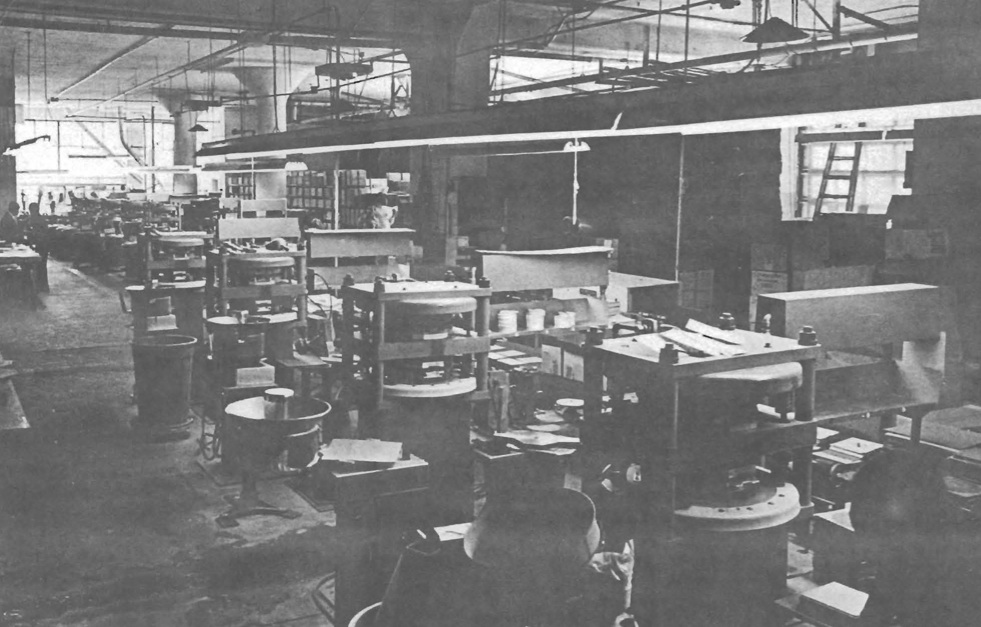 Cook remained very active in audio production and technical work at least into the 1970s; above, an image of his factory circa 1970. Cook Laboratories offered a range of services including a recording studio, cassette and record duplication and stamping, A/V production services, and specialized equipment manufacture.
Cook remained very active in audio production and technical work at least into the 1970s; above, an image of his factory circa 1970. Cook Laboratories offered a range of services including a recording studio, cassette and record duplication and stamping, A/V production services, and specialized equipment manufacture.
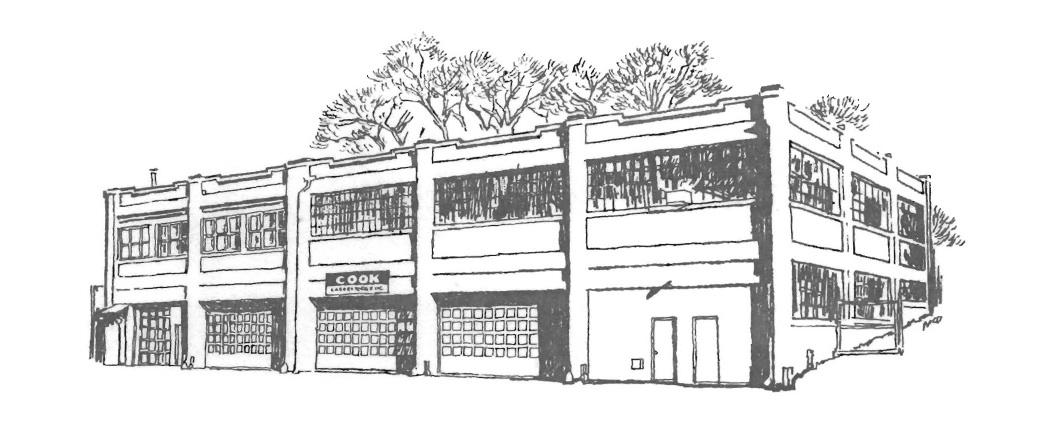 For a fascinating view inside the above-depicted plant, click below to download their circa 1970 catalog of services.
For a fascinating view inside the above-depicted plant, click below to download their circa 1970 catalog of services.
DOWNLOAD: Cook_Laboratories-1960s_brochure
There is a ton of other information online concerning Cook; here are some good places to start. Cook passed in 2002 (click here for his obituary as published by the AES) and the catalog of recordings that he controlled is now owned and archived by the Smithsonian. In fact, you can purchase the ‘Burlesque’ recording depicted above from them. Cook’s Wikipedia page was apparently created with input from a former employee; if anyone out there worked for Cook at his plant in CT, please drop us a line. I also welcome any substantiated corrections to this piece. And I look forward to a heated discussion of the merits and/or fallacies of ‘binaural sound’ in the comments section.
Thanks yet again to T.F. for making these rare archival materials available to all. For those of you unacquainted with T.F. and his rather unique perspective on the history and development of commercial stereo-sound recording, please click here.
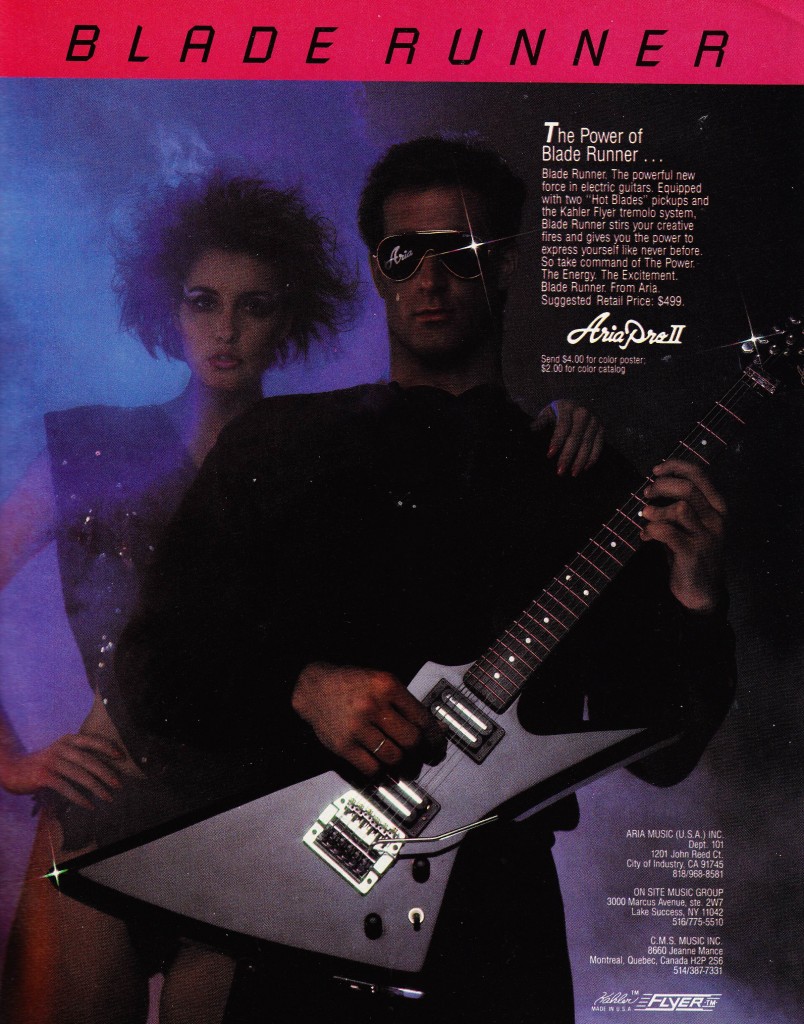 As I was packing my belongings for a new, quieter life in the Eastern Atlantic, I came across this curiosity. A Blade-Runner themed guitar. But. Not even the ‘famous’ (relatively speaking, of course) Guild-Brand Blade Runner Guitar. Close analysis of this obscure piece of content revealed a deep truth: there is still so, so much to be learned from digging thru endless piles of ancient audio-themed papers. I cannot stop. Yet. There is still more work to be done. Let us now examine the facts.
As I was packing my belongings for a new, quieter life in the Eastern Atlantic, I came across this curiosity. A Blade-Runner themed guitar. But. Not even the ‘famous’ (relatively speaking, of course) Guild-Brand Blade Runner Guitar. Close analysis of this obscure piece of content revealed a deep truth: there is still so, so much to be learned from digging thru endless piles of ancient audio-themed papers. I cannot stop. Yet. There is still more work to be done. Let us now examine the facts.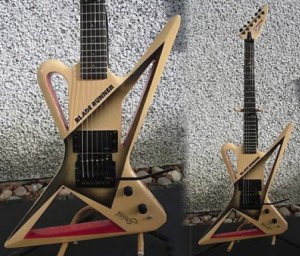 The Guild ‘Blade Runner’ (at left; source) utilizes the actual Blade-Runner-Film font on its body, suggesting that the Guild guitar was actually licensed by the film’s producers?
The Guild ‘Blade Runner’ (at left; source) utilizes the actual Blade-Runner-Film font on its body, suggesting that the Guild guitar was actually licensed by the film’s producers?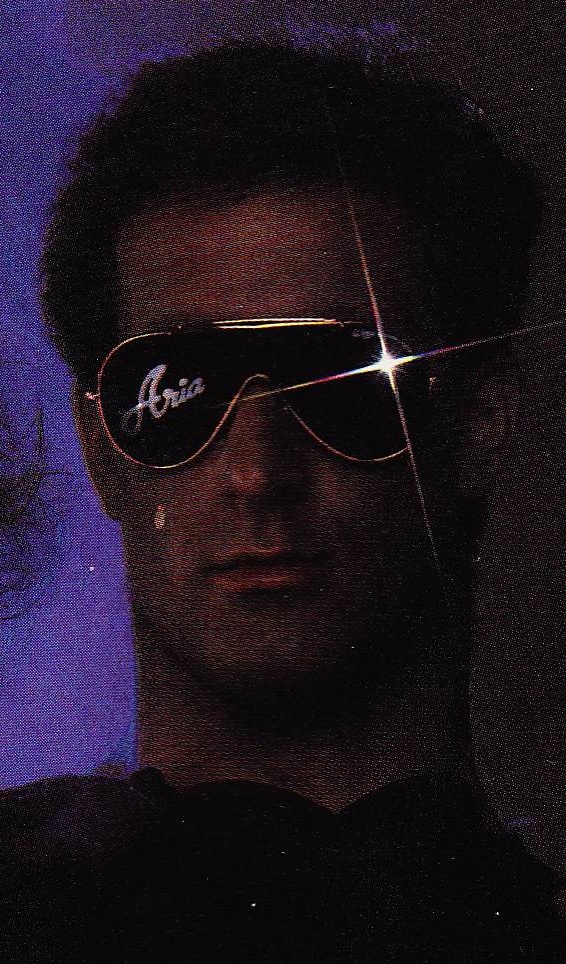 He definitely seems to have a stronger resemblance to Harrison Ford’s Deckard than to Rutger Hauer’s Roy Batty; yet the sunglasses are a confusing and highly suggestive twist. In the grand tradition of Blade Runner Conspiracy Theories, I would like to put forth the following thesis:
He definitely seems to have a stronger resemblance to Harrison Ford’s Deckard than to Rutger Hauer’s Roy Batty; yet the sunglasses are a confusing and highly suggestive twist. In the grand tradition of Blade Runner Conspiracy Theories, I would like to put forth the following thesis: